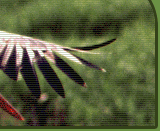| Project Passport | | Project Title | Cooperation of Nordic-Baltic NGOs in Peatland conservation | | Project Duration | 2009 | | Beneficiary | Latvian Fund for Nature | | Partners | Finnish Association for Nature Conservation, Finnish Environment Institute, University of Helsinki, Belarus Botanical Society, Institute of Experimental Botany NASB (Belarus), Estonian Fund for Nature, Centre for Energy and Environmental Sciences (The Netherlands), Wetland Centre, Radboud University of Nijmegen, ERA foundation, Bergerveen Foundation (The Netherlands). | | Funding | Nordic Council of Ministers | | Project Location | Latvia Spring mires in Slītere and Gauja National Parks, Cena Mire Nature Reserve Finland Taipensuo Mire and Suurisuo Mires | | Project manager | Dr. biol. Māra Pakalne | | Contact | | Phone | +371 29511001 | | Fax | +371 67830291 | | E-mail | mara@lanet.lv | | Address | Jaunmarupe, Mazcenu alley 3 | | LV-2166, Latvia | Aim of the project: Establish and strengthen the Nordic-Baltic partnership in peatland conservation, notably in the protection of peatland ecosystems in favour of biodiversity, establish this partnership in broader European networks, educate the students and experts by organisation an International peatland training course.  
Amata Project objectives: Organisation of an International peatland training course in Latvia with the contribution from Finnish, Belarus, Polish, Dutch, Estonian and Latvian experts for the education of the students and specialists in peatland conservation and management. The target group: Peatland experts and students from NGOs from Belarus, Estonia, Latvia, Lithuania, Poland, Finland and the Netherlands. The present proposal aims at sharing the Finnish experience of NGO on peatland studies, conservation and restoration issues, as well as bringing together specialised knowledge on damaged peatlands from The Netherlands and Poland and experiences with conservation of large slightly disturbed mire gradients in Latvia, Estonia, Belarus and Finland. To fulfil the project aims in 2009 the International peatland training course will be organised in Latvia and Finland from July 15-25, 2009. In the training course the invited staff of NGOs and young mire scientists/students take part. Well-known peatland researchers are invited to participate in the eco-hydrological research in the field. By learning on the spot we aim to unravel landscape-ecological relationships between the hydrological functioning of the peatlands and the occurrence of endangered plant and animal species. It is very important that people working with peatlands can make a quick-scan evaluation of which parts of protected mire ecosystems are influenced by outside activities and how measure can be taken to stop that. The Peatland course will deal with: - quick scan eco-hydrological analyses to assess important hydrological relationships on the landscape-scale (where does the groundwater come from, which are the causes of water loss)
- study of climate influence (temperature and precipitation) on hydrological and geochemical processes in bogs and calcareous fens (what will happen during global change?)
- technical aspects of mire restoration,
- tactics how to convince local stakeholders to invest in conserving mires for ecotourism,
- combining bio fuel production with nature conservation,
- preventing fires in drained peatlands by rewetting (and how to trade CO2-emissions).
  
Peatlands of Slitere National Park The training course will start with a series of lectures by peatland experts in hydrology, vegetation, geology, peatland restoration which will also assist in carrying out practical research activities. Most experts are members of the International Mires Conservation group (IMCG; see www.IMCG.net), which is the world organisation for the projection of mires. The invited experts have extensive and long lasting experience in peatland protection and peatland research. Many of them have been involved in international projects on peat restoration. During the course field studies will be carried out in the Slītere National Park and Gauja National park and Cena Mire Nature Reserve. The sites consist of various mire complexes with gradients between groundwater and rainwater fed mires and with well developed spring mires with chalk deposition.
In Finland research will be carried out in Taipensuo and Suurisuo Mires. The Finnish mires include mire complexes with gradients between groundwater and rainwater fed mires and well developed spring mires. Visit to Finnish Aapa-mires and rainwater fed bogs will be included in the course.   
Cena Mire INTERNATIONAL PEATLAND TRAINING COURSE FINAL REPORT (1.62 MB) PROGRAM (66.12 KB) Mara Pakalne |







